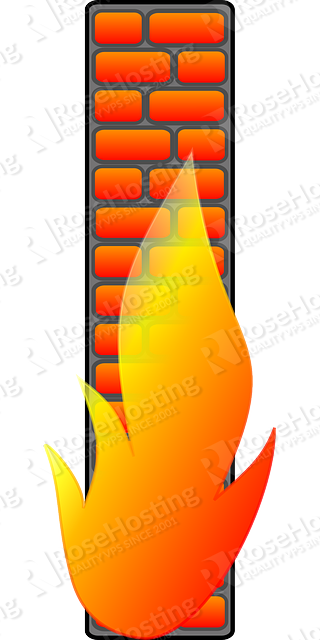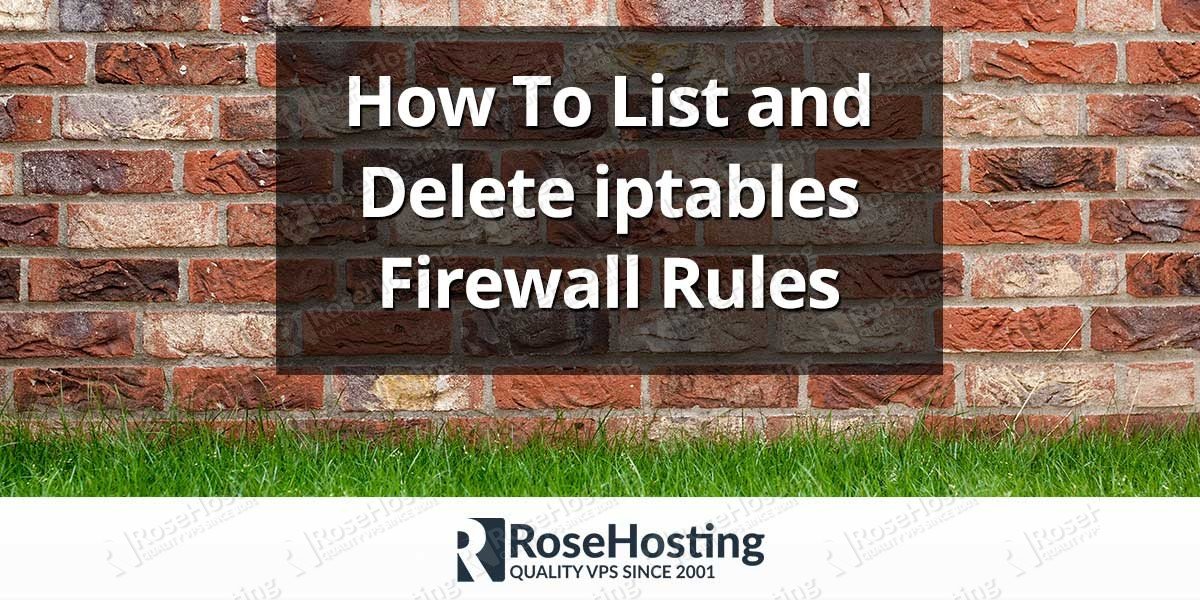We’ll show you, how to list and delete iptables firewall rules. Iptables is a command line utility that allows system administrators to configure the packet filtering rule set on Linux. iptables requires elevated privileges to operate and must be executed by user root, otherwise it fails to function.
How to List iptables Firewall Rules?
Iptables allows you to list all the rules which are already added to the packet filtering rule set. In order to be able to check this you need to have SSH access to the server. Connect to your Linux VPS via SSH and run the following command:
sudo iptables -nvL
To run the command above your user need to have sudo privileges. Otherwise, you need to add sudo user on your Linux VPS or use the root user.
If there are no rules added to the packet filtering ruleset the output should be similar to the one below:
Chain INPUT (policy ACCEPT 0 packets, 0 bytes) pkts bytes target prot opt in out source destination Chain FORWARD (policy ACCEPT 0 packets, 0 bytes) pkts bytes target prot opt in out source destination Chain OUTPUT (policy ACCEPT 0 packets, 0 bytes) pkts bytes target prot opt in out source destination
Since NAT (Network Address Translation) can also be configured via iptables, you can use iptables to list the NAT rules:
sudo iptables -t nat -n -L -v
The output will be similar to the one below if there are no rules added:
Chain PREROUTING (policy ACCEPT 0 packets, 0 bytes) pkts bytes target prot opt in out source destination Chain POSTROUTING (policy ACCEPT 0 packets, 0 bytes) pkts bytes target prot opt in out source destination Chain OUTPUT (policy ACCEPT 0 packets, 0 bytes) pkts bytes target prot opt in out source destination
If this is the case we recommend you to check our tutorial on How to Set Up a Firewall with iptables on Ubuntu and CentOS to make your server more secure.
How to Delete iptables Firewall Rules?
At some point, you may need to delete a specific iptables firewall rule on your server. For that purpose you need to use the following syntax:
iptables [-t table] -D chain rulenum
For example, if you have a firewall rule to block all connections from 111.111.111.111 to your server on port 22 and you want to delete that rule, you can use the following command:
sudo iptables -D INPUT -s 111.111.111.111 -p tcp --dport 22 -j DROP
Now that you deleted the iptables firewall rule you need to save the changes to make them persistent.
In case you are using Ubuntu VPS you need to install additional package for that purpose. To install the required package use the following command:
sudo apt-get install iptables-persistent
On Ubutnu 14.04 you can save and reload the firewall rules using the commands below:
sudo /etc/init.d/iptables-persistent save sudo /etc/init.d/iptables-persistent reload
On Ubuntu 16.04 use the following commands instead:
sudo netfilter-persistent save sudo netfilter-persistent reload
If you are using CentOS VPS you can save the changes using the command below:
service iptables save

PS. If you liked this post, on how to delete iptables firewall rules, please share it with your friends on the social networks using the buttons on the left or simply leave a reply below. Thanks.

Sometimes it is necessary to delete all rules and reset to wide open, temporarily …
——————-
for table in $(cat /proc/net/ip_tables_names | sort)
do
for action in F X Z
do
${IPTABLES} -t “${table}” “-${action}”
done
done
iptables -t filter -P INPUT ACCEPT
iptables -t filter -P FORWARD ACCEPT
iptables -t filter -P OUTPUT ACCEPT
—————–
And never forget that rules set for IPv4 with iptables are independent and separate from rules set for IPv6 with ip6tables. So if you have IPv6 connectivity you need to worry about setting up a firewall for that as well.
(The above article only concerns IPv4.)